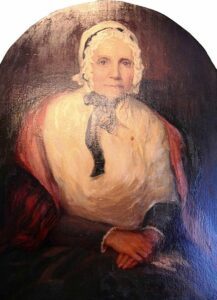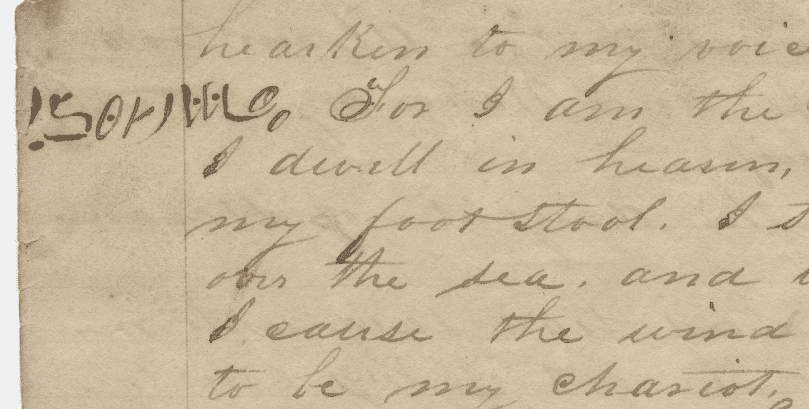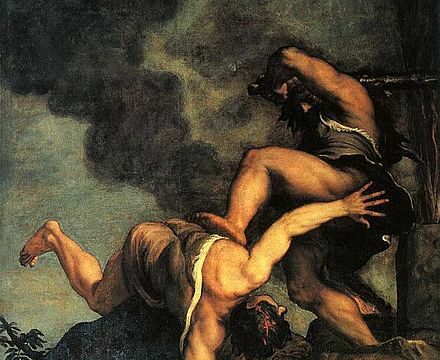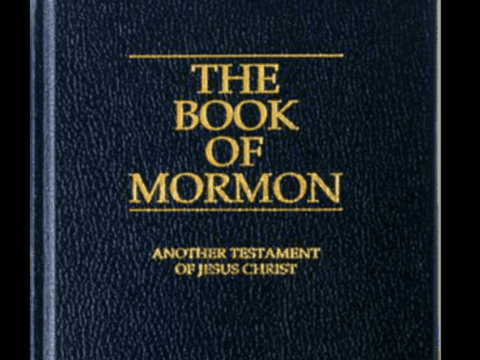
One of the pillars of disbelief for critics of the Book of Mormon is the notion that Joseph Smith was well known as an imaginative story teller. He was allegedly telling wild stories about the ancient peoples of the Americas years before be began the “translation” of the Book of Mormon — that pretty much is all we need to know to explain the origins of the Book of Mormon.
This mischief begins with a puzzling statement from Lucy Mack Smith that is endlessly used and abused by Book of Mormon critics, and often accepted at face value by Latter-day Saints. But there are enough oddities in her account and a lack of support from Joseph’s peers for her statement, as we discuss below, that a little more skepticism might be healthy. It is hardly the kind of evidence that one can hang one’s hat on. Here is the statement from her 1853 autobiography:
From this time forth [after the initial visits from Moroni], Joseph continued to receive instructions from the Lord, and we continued to get the children together every evening, for the purpose of listening while he gave us a relation of the same. I presume our family presented an aspect as singular as any that ever lived upon the face of the earth, all seated in a circle, father, mother, sons, and daughters, and giving the most profound attention to a boy, eighteen years of age, who had never read the Bible through in his life: he seemed much less inclined to the perusal of books than any of the rest of our children, but far more given to meditation and deep study. We were now confirmed in the opinion that God was about to bring to light something upon which we could stay our minds, or that would give us a more perfect knowledge of the plan of salvation and the redemption of the human family. This caused us greatly to rejoice, the sweetest union and happiness pervaded our house, and tranquillity reigned in our midst. [p.85] During our evening conversations, Joseph would occasionally give us some of the most amusing recitals that could be imagined. He would describe the ancient inhabitants of this continent, their dress, mode of travelling, and the animals upon which they rode; their cities, their buildings, with every particular; their mode of warfare; and also their religious worship. This he would do with as much ease, seemingly, as if he had spent his whole life with them. [emphasis added]
This is used not only by Book of Mormon critics to suggest that Joseph’s story telling skills were remarkable and predated the production of the Book of Mormon, but is also used by some factions within Mormonism who claim that Joseph of course knew all about the details of Nephite civilization and where they were located, so various statements inferring a North American setting must be taken as prophetic certainty, in sharp contrast to what the record really shows about Joseph’s evolving views on where the Book of Mormon scenes in the Americas might have taken place.
The abuse of Lucy’s quote includes episodes when some critics misuse her statement to imply that Joseph had long been interested in the ancient Americas and was telling stories of life in ancient America before he encountered Moroni and the gold plates. Lucy’s statement in context clearly indicates that the occasionally “amusing recitals” were usually quite serious and inspiring, and only began after Joseph was introduced to the Book of Mormon by Moroni, not before. But the way the statement has been edited by the Tanners has caused some confusion in readers. Below is a passage from Mormonism–Shadow or Reality? by Gerald and Sandra Tanner, p. 81, as discussed in a fascinating report by Robert Vukich in “An Incident Concerning Page 81 of Mormonism–Shadow or Reality?” from the 2000 FAIRMormon Conference:
The fact that Joseph Smith had a great interest in the ancient inhabitants of the land prior to his “translation” of the Book of Mormon is no secret to those who have read the History of Joseph Smith by his Mother. Mrs. Smith said: “I presume our family presented an aspect as singular as any that ever lived upon the face of the earth–all seated in a circle, father, mother, sons and daughters, and giving the most profound attention to a boy, eighteen years of age, …During our evening conversations, JOSEPH would occasionally give us some of the most amusing recitals that could be imagined. He would describe the ANCIENT INHABITANTS of this continent, their dress, mode of traveling, and the animals upon which they rode; their cities, their buildings, with every particular; their mode of warfare; and also their religious worship. This he would do with EASE, seemingly, as if he had spent his whole life among them.” (History of Joseph Smith by His Mother, 1954 Edition, pages 82-83)
Lucy’s statement in context is the voice of a witness seeing a miracle taking place through Joseph’s encounter with Moroni and the Book of Mormon, but the serious and inspiring flavor of her statement becomes a focus on amusing tales from an entertaining story teller who was skilled at making stuff up, thus explaining away Book of Mormon origins as the work of Joseph’s imagination. As edited and presented, that’s not exactly true to what Lucy’s statement really indicates.
Vukich shares his correspondence with the Tanners as he questions their motives and accuracy in their editing of Lucy Mack Smith’s quote. It is an interesting exchange that reminds us that some critics in spite of their proclaimed commitment to truth and accuracy might take a few shortcuts that can be questioned.
The abuse of Lucy Mack Smith’s statement to turn the Book of Mormon into the easily explained fruit of an entertaining story teller has been replayed in many forms. A recent example is in a seemingly scholarly work that is unable to get past the author’s personal biases to confront the Book of Mormon seriously. The work is Ann Taves, Revelatory Events: Three Case Studies in the Emergence of New Spiritual Paths (Princeton: Princeton University Press, 2016), as reviewed by Kevin Christensen in “Playing to an Audience: A Review of Revelatory Events,” Interpreter: A Journal of Mormon Scripture 28 (2018): 65-114. Christensen offers some significant analysis regarding Lucy Mack Smith’s statement that should be considered the next time someone rattles it off as if it helped explain the origins of the Book of Mormon, or as if it takes away from the miracle of what Joseph dictated from a hat while housed in the information vacuum of Harmony, Pennsylvania (a village that essentially no longer exists and wasn’t much in Joseph’s day wither), without the aid of manuscripts, a Bible, reference materials, or a technical advisory team scouting the world for Hebraisms, maps of Arabia, details about the ancient Americas, etc.
In response to Taves’ excessive reliance on Luck Mack Smith’s statement, Kevin Christensen offers the following analysis in his review:
There are some unexamined oddities about the Lucy Smith quote. Before I would take it as an interpretive foundation, I must consider that, even though a first-hand account, it is not an autograph account, and it is late, dating to an 1844 dictation in Nauvoo to the non-LDS, 24-year old Martha Jane Coray regarding events in Palmyra 1823 and then not published until 1853. That is, the quote is six years older than Joseph Smith’s official history from 1838, which Taves takes notable interest in dissecting and comparing with earlier sources. In her discussion of method and sources for Mormonism, she observes:
Apart from the 1825 agreement with Josiah Stowell and the 1826 court record, both of which are preserved in later versions, we have no real-time access to events until July 1828, when D&C 3 — the first real-time recorded revelation — opens a window in the wake of the loss of the first 116 pages of the manuscript. Chapter 1 thus opens with an in-depth analysis of D&C 3, read as a window on that moment rather than as it was interpreted and reinterpreted in later accounts. (21)
The Lucy Smith quote, aside from being a late account, rather than early and contemporary (not “real time access,” not a direct “window on the moment”), turns out to be notably odd and unique with respect to Joseph Smith, rather than well supported from a range of sources. Certainly much in Lucy’s biography is well supported, but let us recognize the anomaly here. Odd accounts do occur in history, yes, but the account raises questions that should be faced and mentioned before building one’s structure there. First of all, the Book of Mormon we have has no descriptions of people riding animals in over 500 pages that include several major migrations and 100 distinct wars. It provides no notably detailed descriptions of clothing (other than armor) and no detailed descriptions of the structure of later buildings. The most detail we get involves descriptions of fortifications with palisaded walls and ditches.
Then there is the unasked question as to why — if Joseph Smith as a youth was capable of this kind of detailed, immersive, evening-filling recital on the everyday particulars of Book of Mormon peoples and culture — do we have no further record anywhere of his performing the same service as an adult? Perhaps the closest circumstance on this topic involves the Zelph story on Zion’s Camp, but in that case the notable differences in the details recorded by the different people who reported it, even those writing close to the event, should give pause to a person trying to build an interpretive foundation on an isolated, late, anomalous account related to far longer and complex narrative than the Zelph gossip. It bears mentioning that if Joseph Smith had been telling stories about the Book of Mormon peoples, animals, clothing, and culture, such stories should have had an obvious influence on Abner Cole’s 1830 parody version, the Book of Pukei, which “tells in mocking fashion about the sorts of things that Joseph’s neighbors expected to find in the Book of Mormon.” Yet the most notable thing about the Book of Pukei is how utterly different it is from the actual Book of Mormon. The book Joseph Smith produced was emphatically not what his neighbors expected.
It is true the Book of Mormon does contain abundant details about “their religious worship” and their “modes of warfare,” but we have no other accounts of Joseph Smith’s filling anyone’s evening or afternoon with amusing or serious recitals on those topics either. Again, why not? This is not a frivolous question but one addressed to a foundation stone upon which Taves chooses to build.
The one notable discussion of ancient buildings from Joseph Smith comes as his surprised and delighted review of John Lloyd Stephen’s Incidents of Travels Central America as expressed in two articles in the Times and Seasons in Nauvoo. I find Michael Coe’s report of Joseph Smith’s encounter with the Stephen’s book particularly telling:
In 1841 — after the Book of Mormon, actually — there was a publication in New York and London of a wonderful two volume work called Incidents of Travel in Central America, Chiapas and Yucatan by John Lloyd Stephens, an American diplomat, and his artist-companion, the British topographical artist Frederick Catherwood, with wonderful illustrations by Catherwood of the Maya ruins. This was the beginning of Maya archaeology, … and we who worked with the Maya civilization consider Stephens and Catherwood the kind of patron saints of the whole thing.
Well, Joseph Smith read these two volumes, and he was flabbergasted, because what he had dictated about the ancient his mind, these were the ancient cities that he was talking about. They weren’t in South America, as he originally thought; they were in Central America and neighboring Mexico.
It happens that there are over 500 passages with geographic details for the New World portions of the Book of Mormon, and they have a remarkable internal consistency. But they are not at all consistent with any location in South America, and more particularly, there is no way to fit the internal travel accounts required to a New York Cumorah and a Land South that includes South America. Coe doesn’t bother to explain how Joseph managed to describe in detail and at length something so very different than he originally imagined, or more accurately, what Coe imagines Joseph imagined. Taves avoids these issues the same way Coe does: by not exploring the Book of Mormon text or Joseph Smith’s history or believing Mormon scholarship in enough detail to encounter or generate such problems. In her account, the Book of Mormon is Biblical sounding, has a bit of distinctive language in chiasmus, and has a story of “shining stones” and divine rebuke she reads as analogous to Joseph Smith and the plates. But for purposes of her discussion, it can be defined simply as “large” and “complex,” just as The Big Book of AA is, and as Schucman’s A Course in Miracles is, and as a range of other automatic writings are. Personally, I find the superficiality of her approach to the Book of Mormon to be astonishing in a book that purports to authoritatively account for its existence. And this is true even considering the comment of another sympathetic Catholic scholar, Thomas O’Dea, who famously observed, “The Book of Mormon is not one of those books that one must read in order to have an opinion of it.” [references omitted]
Lucy’s statement is an oddity. Certainly Joseph discussed things that he learned from revelation with his family, but there is no reason to believe that what he would encounter and dictate in the translation process was already part of a worked out collection of stories or from a manuscript he was already familiar with. Joseph the remarkable teller of Indian stories is not the Joseph that anyone seems to have known. After the Book of Mormon came out, he didn’t tell such stories, either. From his sermons, we don’t see evidence that he was all that familiar with Book of Mormon peoples and details. We don’t see that in the statements of others closely associated with him. Lucy’s lone statement long after the Book of Mormon was published does not form a solid foundation for understanding the origins of the Book of Mormon.
By the way, an important point overlooked by the Tanners and other critics in their use of Lucy mack Smith’s (edited) statement is that Joseph’s family believed him. They believed that this young man had seen an angel and been directed to ancient plates with a sacred record. Daniel Peterson underscores this important point from several angles on his post at Sic et Non, “Father and mother believed him; why should not the children?” He quotes, for example, the 1875 testimony of Joseph’s younger brother, William Smith:
Joseph Smith, at the age of seventeen years, with the moral training he had received from strictly pious and religious parents, could not have conceived the idea in his mind of palming off a fabulous story, such as seeing angels, etc. . . .
There was not a single member of the family of sufficient age to know right from wrong but what had implicit confidence in the statements made by my brother Joseph concerning his vision and the knowledge he thereby obtained concerning the plates.
Father and mother believed him; why should not the children? I suppose if he had told crooked stories about other things, we might have doubted his word about the plates, but Joseph was a truthful boy. That father and mother believed his report and suffered persecution for that belief shows that he was truthful.
And again in 1884:
All believed it was true, father, mother, brothers and sisters. You can tell what a child is. Parents know whether their children are truthful or not. . . . Father knew his child was telling the truth.
His parents knew. His family knew. And millions who give the Book of Mormon a chance have also come to know that Joseph was telling the truth.












Let me make sure I understand your expectations. We are to doubt Lucy's information because "it is not an autograph account, and it is late" (1853) but take the William Smith quote at face value (1875 & 1884).
This is more of the typical confirmation bias from those who promote the Mesoamerica/two Cumorahs theory. They reject anything that contradicts their theory, including the teachings of all the prophets about the Nee York Cumorah. And they continue to promote the discredited narrative that Joseph Smith learned Book of Mormon geography from a popular travel book.
Jonathan, have you read the detailed analysis of Joseph’s reaction to the John Lloyd Stephens publication? MormonInterpreter.com is s good place to start. The reasons why so many students of the Book of Mormon view Mesoamerica as the only plausible region have nothing to do with the blindness you mention, but are driven by data.
No, we are to be cautious about making it the foundation for an interpretive framework when it makes puzzling statements that are not supported by other witnesses and that do not correspond with Joseph’s own actions nor with the Book of Mormon. Late statements or statement written by others are not inherently suspect, but are certainly subject to a broader range of errors than a contemporaneous statement written directly by the author.
Jeff, Jonathan in his book, "The Lost City of Zarahemla: From Iowa to Guatemala and Back Again" pretty much makes the case that Joseph Smith never authored the Times and Seasons articles which mentioning Stephen's book and mentions Guatemala as Book of Mormon lands. From his own stylometric analysis, and other arguments, it appears that Benjamin Winchester authored those articles. Joseph at the time was either in hiding, too busy, or otherwise unavailable. Besides he was just the nominal editor and didn't necessarily approve the articles in question.
Also, the existence of Oliver Cowdery's "Letter VII," strongly argues against Mesoamerica and for North America. And firmly establishes Cumorah in New York. Letter VII was republished with Joseph Smith's approval many times. He even had it copied into his personal journal. And parts of Letter VII appear in our own scriptures.
Aside from his numerous books, you can read more of Jonathan Neville's work at several of his blogs which each accomplish a different purpose. Here are two of them:
http://bookofmormonwars.blogspot.com/
http://www.lettervii.com/
Jeff, since you can see how certain information is used to demonize Joseph Smith, and that critical thinking of that certain information shows serious problems with the conclusion –then if you ever decide to consider the much demonized Andes BoM geography model, ask your questions to Del Dowdell at Nephicode.blogspot.com An overview of the model is here: https://goo.gl/fP1yCS This is part 1 of 33 parts. To go to the next part use the Menu on the right side of the website.
Steven, I'd be very interested in what meaningful rebuttal has been offered — rather than just claiming that we are all just blindly biased fools who reject anything that contradicts our preconceived notions, as from Jonathan3D above — to the detailed and compelling review of Neville's work at The Interpreter. I have read these and find them compelling, detailed, and carefully done. A rebuttal? Here are the 3:
1. Matthew Roper, "John Bernhisel’s Gift to a Prophet: Incidents of Travel in Central America and the Book of Mormon," Interpreter: A Journal of Mormon Scripture 16 (2015): 207-253.
2. Matthew Roper, "The Treason of the Geographers: Mythical 'Mesoamerican' Conspiracy and the Book of Mormon," Interpreter: A Journal of Mormon Scripture 16 (2015): 161-205.
3. Matthew Roper, Paul Fields and Larry Bassist, "Zarahemla Revisited: Neville’s Newest Novel," Interpreter: A Journal of Mormon Scripture 17 (2016): 13-61.
The first article provides more than enough to do away with Neville's hypothesis. This is not a case of confirmation bias blindly rejecting logic and facts. Quite the opposite.
The articles would be much better if the MesoAmerican theory was left out.
Plenty of meaningful rebuttal to MesoAmerica has been offered. The sheep and good ole boy MesoAmerican intellectual club do not want to listen, nor acknowledge such information.
Interesting that the MesoAmerican intellectuals who believe they are smarter than everyone else ignore what Joseph Smith actually said about where Lehi landed.
"Plenty of meaningful rebuttal to MesoAmerica has been offered. The sheep and good ole boy MesoAmerican intellectual club do not want to listen, nor acknowledge such information. "
Actually, the Mesoamerican club boys d listen and listen carefully to criticism of the limited geography theory but the fact of the matter s that the criticisms fall apart easily since Mesoamerica, by far, has the greatest number of compatible data with the Book of Mormon narrative.
Darren, I have to agree with erichard. I have been following Del's work for quite a while now on his blog and he demolishes the Mesoamerica theory time and time again. It does not have the most compatible data with the Book of Mormon narrative. In fact, those theorists are always changing the narrative to match the theory not the other way around. For instance, claiming that the Nephites did not know common directions and changing where north, south, east and west are. That is just one problem with the theory. There are many, many others. Another example is the fact that Samuel prophesies of the destruction that occurs at the time of the crucifixion, that mountains will be made valleys and valleys will be made mountains "whose height is great". Where is the evidence of this in Mesoamerica? There is none. I encourage anyone who is interested to go and read Del's work. You may be surprised at what you learn. erichard has already given the link.